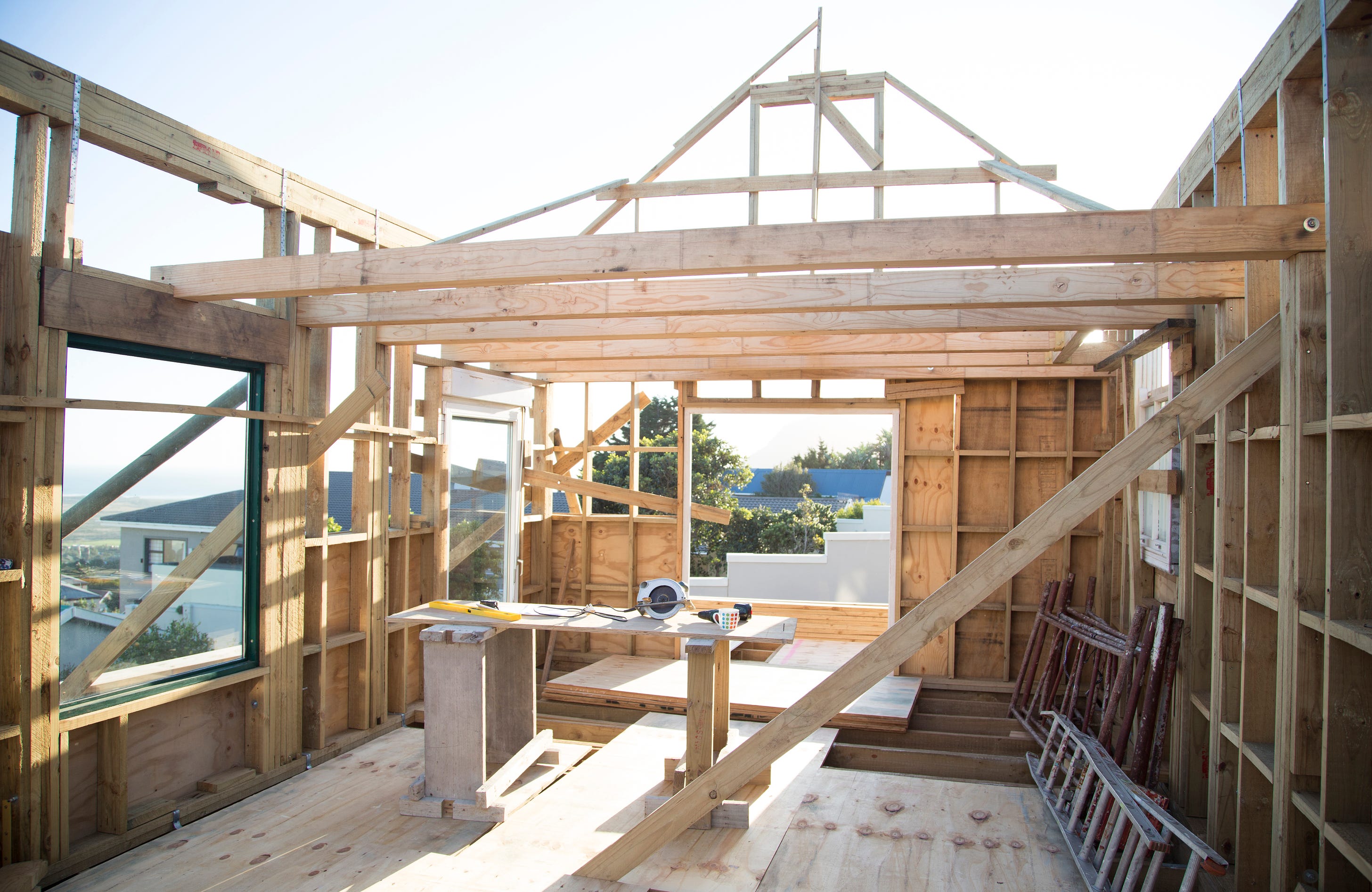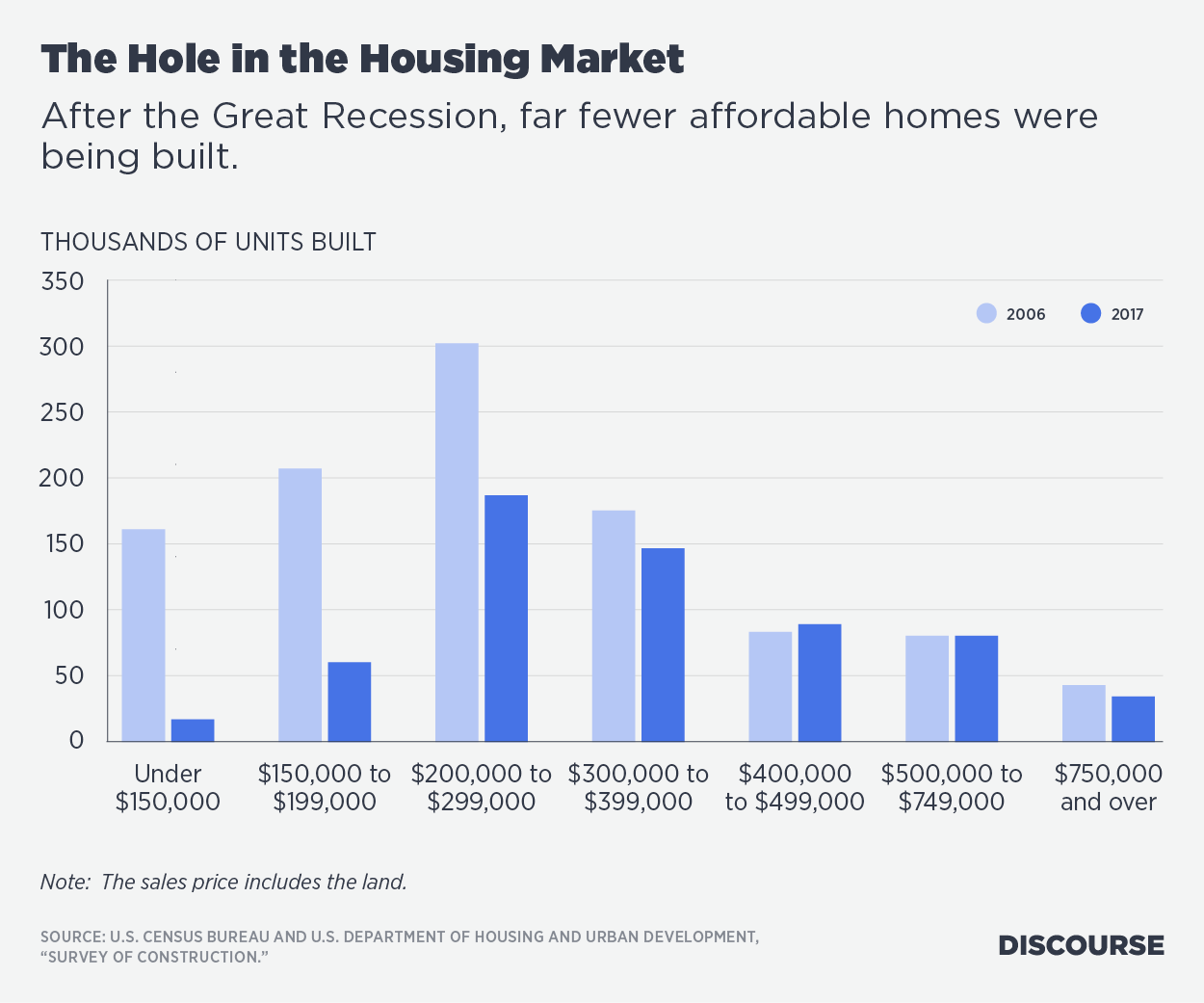|
 |
Flirting With the Last ‘No’ in Housing
America needs more abundant and more affordable homes, and the only way to get them is to let corporate owners build them and rent them out
It is becoming increasingly clear that the U.S. has a deep housing deficit. The visible evidence is hard to miss: Hundreds of thousands of families are moving out of the most expensive cities each year. Thousands of others are increasingly living unhoused in those cities. Rents are rising, year after year, and vacant units are becoming more and more scarce. The statistical evidence is clear also, with estimates of the shortage ranging from a few million to 20 million.
Why are we experiencing this housing shortage? Urban land use regulations and zoning rules have stunted our ability to build cities. For decades, most American cities tried to stick a Band-Aid on that problem by building new neighborhoods out at the edges of their metropolitan areas. Since the Great Recession, fewer of those homes have been built, and the inability of cities across America to permit other forms of housing has been laid bare. To truly solve America’s housing crisis, we need to build more abundant and affordable homes—and right now, despite pleas from many to “get Wall Street out of housing,” private equity firms are in the best position to do that.
The History of Housing Stock
In the 1970s and ’80s, the stock of American homes grew by about 1.5% to 3.5% each year, and it was divided pretty equally among single-family homes and other types of homes (apartments, multiplexes, mobile homes, etc.). From 1990 to the Great Recession, however, construction of new homes didn’t rise above the bottom of that range. The American stock of homes grew by roughly 1.5% annually until it peaked in 2006 at 1.7%. Each year, due to the proliferation of zoning and other land use restrictions, it got harder and harder to build apartments, multiplexes and other types of homes, so by 2006, four out of five new homes were single-family homes.
Since it was increasingly difficult to build anything but a single-family home in the exurbs, by 2006, home prices were at unprecedented highs. In 2008, mortgage standards were tightened sharply in an effort to bring those prices down. Decreasing funding for homeownership did lower home prices, but it also made it harder for families to buy new homes. The lack of adequate building was the cause of high prices. Tight mortgage access now meant that single-family homes had joined all the other housing types in being undersupplied.
Of course, we can all see today that those regulations didn’t pull home prices down permanently. In fact, prices in the most expensive places, such as San Francisco, Los Angeles and New York City, only took a brief breather before rising to new highs.
The government’s crackdown on lending didn’t push home prices down where they had been particularly high before. Rather, it pushed prices down in places where families had moderate incomes and needed a generous lending environment in order to become homeowners—in other words, the places where the tighter mortgage standards would actually make homes less affordable for the families who needed them. These families weren’t seeking the crazy subprime products that had become popular in 2006, but just run-of-the-mill prime mortgages for families with average credit, which lenders had successfully made for decades but which now were greatly curtailed.
Nationally, it took until about 2017 for the average home price to rise back to its 2006 peak. In 2006, about 1.66 million single-family homes were built, along with about 450,000 apartments and other homes. By 2017, apartment construction had risen back to roughly 2006 levels. But single-family home completions were still at less than half the 2006 number—about 790,000.
What kinds of houses were no longer being built in 2017? Houses that families of modest means would have bought, affordable houses, houses for families with decent but not pristine credit.
The Census Bureau tracks homes sold by sale price, and in this figure comparing 2006 with 2017, it is easy to see that the post-2008 American housing market had a donut hole in it.
After the Great Recession, single-family homes were being built only for wealthy families with pristine credit or piles of cash, generally selling for more than $250,000. And where half a million affordable, entry-level, single-family homes used to be built on the outskirts of every affordable American city, now there were practically none. Some apartments were built, where developers could jump through the regulatory hoops, but the number of apartment units being built struggles to top 400,000 annually. We had inadvertently pulled the Band-Aid off our wounded urban and suburban housing markets, and there was no form of housing left to fill the hole.
The Problem Is Low Supply
My work over the past decade has been mostly a discovery of what the public, the experts and policymakers got wrong about the pre-recession housing market. The constraints to supply were a much more important cause of high prices before 2008 than loose lending, speculation, low interest rates or federal subsidies.
When mortgages became scarce, prices in working-class neighborhoods collapsed because the families who used to buy those houses could no longer afford to do so. Eventually, investors filled that gap, but small-scale landlords could only fill so much. Eventually a class of home investor that had never really existed before was born—large institutional owners that bought up hundreds or thousands of homes.
Those large institutions formed a stopgap that prevented home prices from collapsing further. And, in the years since they formed that stopgap, both rents and prices have risen—especially in the neighborhoods where those institutions have been most active. This has led to an anti-corporate backlash. “Those Wall Street fat cats are taking homes away from families. All they care about is profit, so once they get a foothold in a neighborhood, they jack up the rents.” And it seems as though the answer is to ban that activity—to get Wall Street out of housing.
But prices in those neighborhoods increased so much precisely because they had previously gone down so far. The institutional buyers reluctantly entered these markets only because the homes were selling at such discounts. And rents only increased more because the prices of existing homes had fallen so low that no one could build new homes to sell at comparable prices. With half a million affordable homes going unbuilt, year after year, rents were bound to rise.
Were Wall Street landlords really stealing homes from regular families and unfairly jacking up rents? If that were the case, renting families could have bought homes directly from the homebuilders, as they had for decades before. But in reality, half the homebuilders’ market had been swept away. Builders were desperate to sell new homes, and many had gone bankrupt because revenues were too low, while still more were at risk of bankruptcy for years.
Renting families with moderate income and decent credit didn’t miss out on buying new homes because Wall Street was snapping up the available supply. Rather, they didn’t buy new homes because those homes weren’t being built, because the existing homes that Wall Street was buying were still too cheap. Even today, there are many homes in the cheapest parts of some major metropolitan areas where the mortgage payment would be less than the rent on the same home. During the long period before COVID, when prices and mortgage rates were much lower than they are today, that was the case over large swathes of American working-class neighborhoods.
Tenants of those homes couldn’t buy the cheap existing homes because federal regulators considered them unqualified for mortgages. And they couldn’t move into new apartments because local planning departments opposed building them.
The Single-Family Rental Solution
For the purposes of this argument, let’s set any debates about government-imposed mortgage and land use conditions aside. Let’s stipulate that urban land use and zoning rules are reasonable and that families with moderate income and decent credit should not be able to get mortgages. The important point remains that America needs homes. If there is a limit on how many apartments can be built and a limit on how many families can buy their own homes, then the difference has to be made up by single-family rentals. To get back to building half a million affordable single-family homes per year, they will have to be rentals. And it’s going to take owners with scale—in other words, Wall Street.
In recent months, there has been an uptick in new homes built for the rental market. A market that was negligible until recently looks like it has crossed above an annual sales rate of 100,000 units. The new homes we desperately need are finally getting built.
This market is booming, so unsurprisingly, the complaints about corporate home buyers have increased. Some of these demands are not subtle. They aim to put an end to large-scale single-family landlords. Congress has proposed various bills to ban the market altogether. Robert Kennedy Jr. has even made a ban a centerpiece of his presidential campaign.
Since this market has not been a significant buyer of new homes until recently, this opposition may not seem like a big deal. But the past decade has seen unprecedented increases in real rents. In a country as rich as the world has ever seen, the cost of rent has become an increasing share of family expenditures. The reason rents have increased so steeply is because Wall Street wasn’t buying new homes, and we have collectively blocked all other feasible avenues for production and ownership.
There will be many Americans ready to turn the screws, to blame corporations for this mess and to block this market. “Get Wall Street out of housing” is a popular message. But there may be nothing more important in American politics than stopping that message in its tracks. For decades, Americans have been saying no to various kinds of housing, and now we’re paying the price for those decisions. This “no” is especially important because it is the last one. There is no other form of housing at this scale waiting to fill the gap. This is the last chance.
Many excuses will be made. Many will float pipe dreams about some form of housing that doesn’t exist at scale now. But if we lead with “no” while we fight over those excuses and pipe dreams, the cost will be devastating. The destitution that is already tearing cities apart will keep getting worse. The road to housing hell has been paved with well-intentioned “no’s.” This last “no” may get us permanently to the destination.
You’re currently a free subscriber to Discourse .


